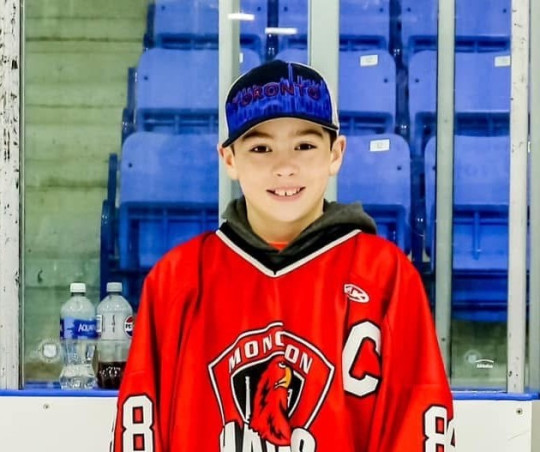February is Heart Month – a month with profound meaning for 11-year-old Blake Savage and his family.
In the fall of 2022, Blake lost consciousness while playing on the playground at school. He was taken to hospital in Moncton where he was assessed and underwent multiple tests. At the time, nothing showed up.
The same thing happened again the following year.
On Nov. 5, 2024, Blake had his first hockey game of the season.
“Little did we know this game would change our lives forever,” says Blake’s mother, Tabatha Savage. “During the hockey game, Blake suffered a cardiac arrest. The quick action of the bystanders with CPR and AED training saved Blake’s life that night.”
First responders arrived at the rink and immediately transported Blake to the hospital. After running tests and ensuring Blake was stable, he was transported by ambulance from Moncton to the IWK.
“It was best for Blake as the IWK was better equipped with cardiologists for children,” Tabatha recalls. “Dr. Kenny Wong and Dr. Santokh Dhillon ran multiple tests and scans on Blake’s heart. The scans showed a healthy heart. It was during the stress test that the heart beats showed irregularities during physical activity.”
It was determined Blake was born with Catecholaminergic Polymorphic Ventricular Tachycardia (CPVT) – a rare genetic heart condition that causes abnormal heart rhythms.
“CPVT is often referred to as the ‘perfect electrical assassin’ in the heart. It typically causes syncope or cardiac arrest triggered by exercise or emotion in young, apparently healthy individuals,” explains Dr. Santokh Dhillon, IWK Health pediatric cardiologist and electrophysiologist. “Early recognition of cardiac arrest, prompt initiation of CPR and application of AED can save lives in this lethal condition. If diagnosed early and with adequate medical treatment, patients with CPVT can live a good quality of life.”
After his diagnosis, Blake started medication right away. He will continue to be monitored, and adjustments will be made to his medication and lifestyle as he grows.
“It’s been three months since the cardiac arrest. Blake has returned to school full-time and is doing well overall,” Tabatha says. “He has to have an AED at all times with him and be in the presence of someone with CPR and AED training.”
Tabatha praises Blake’s school and school district for stepping up after Blake’s diagnosis. They’ve worked with the family and IWK to have a safety plan in place. The school has purchased additional AEDs, and more staff members have taken AED and CPR training.
Advocating for AED and CPR training in Nova Scotia schools has been a passion project of Dr. Dhillon’s over the past several years.
“Schools are the hearts of our community and preparing students to help a victim of cardiac arrest could save the life of a child, parent, teacher, or others visiting the school or out in the community,” Dr. Dhillon says. “We wish to create a generation of lifesavers by placing CPR and AED skills in the confident hands of all students and providing schools with a flexible framework to prepare for a cardiac emergency.”
“Children are incredibly receptive to learning new skills. If our schools were to incorporate CPR and AED training into the curriculum, we would be teaching these children valuable lifesaving skills,” says Kristy Matheson, cardiology clinic nurse, IWK Health Children’s Heart Centre. “The more people we have in the community able to respond to a cardiac arrest, the higher the chance of saving lives. When someone has a cardiac arrest, every minute counts.”
Inspired by Dr. Dhillon’s efforts and Blake’s experience, Tabatha and her family will advocate for CPR and AED training to be part of the curriculum in New Brunswick schools, too.
“We are lucky the IWK is only a couple of hours from home and have cardiologists that specialise in children’s heart conditions,” Tabatha says. “We cannot stress enough the importance of having CPR and AED training, and of public facilities having AEDs. It truly can save a life.”
